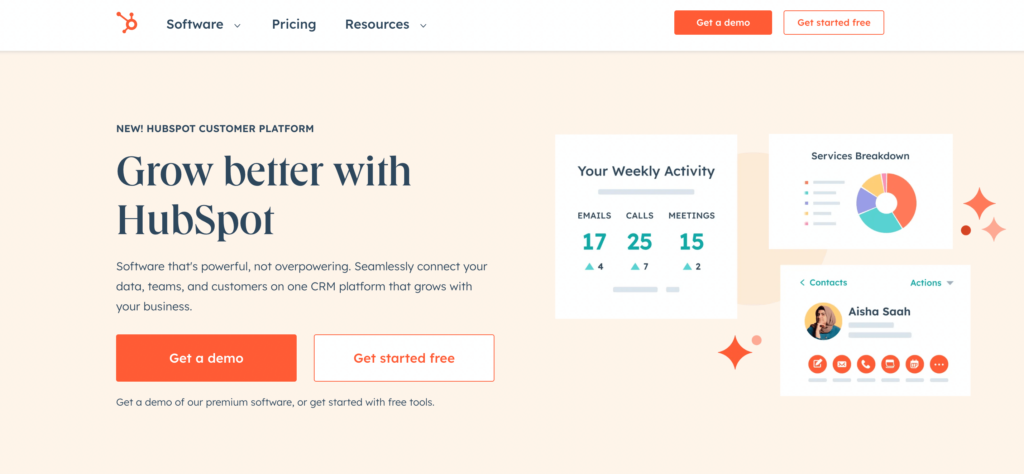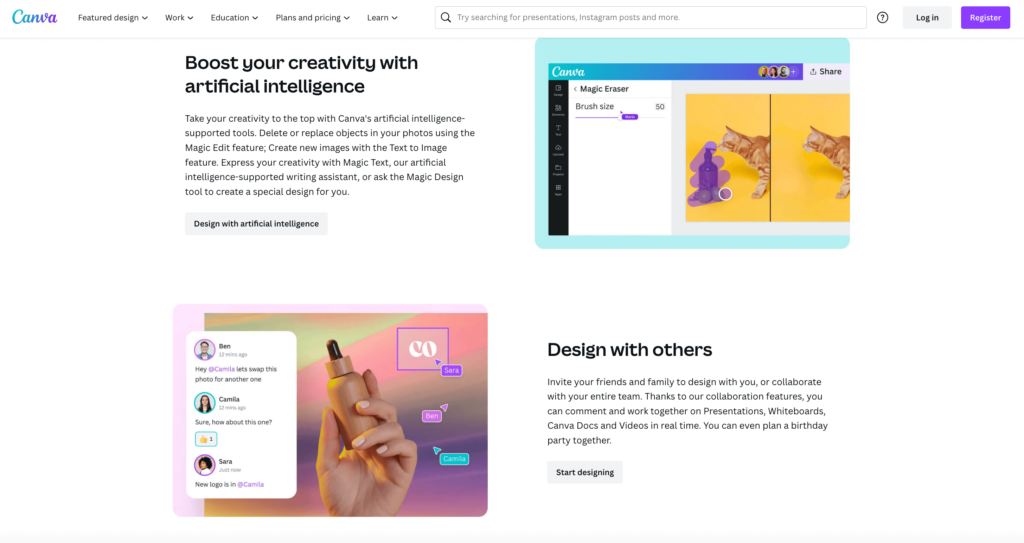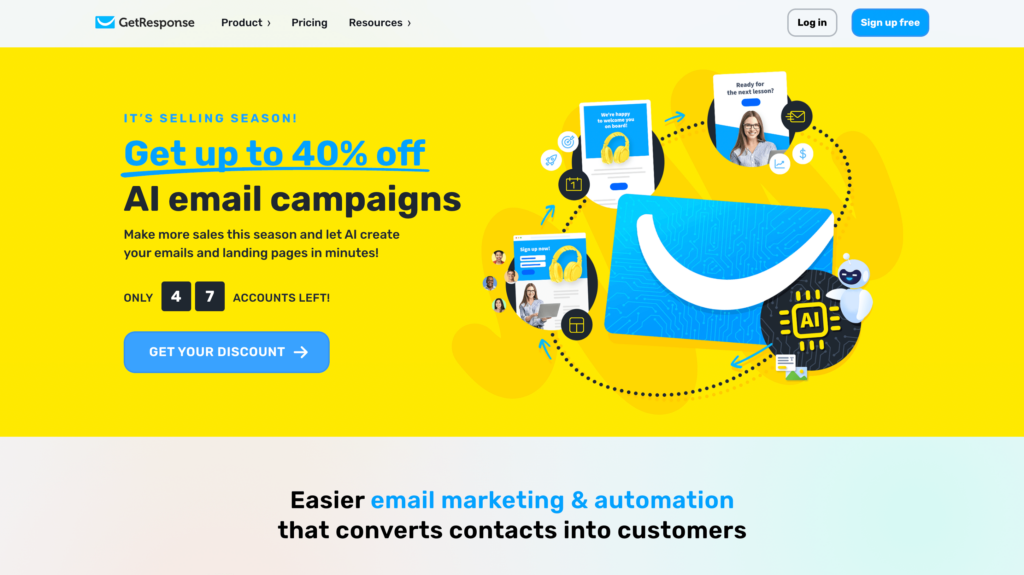
SaaS Product Launch with Examples for Marketing Industry
SaaS solutions offer innovative answers to contemporary challenges, and a well-executed product launch can be the catalyst for your success. If you’re on a quest for inspiration on how to make your SaaS product launch stand out or seeing insights into the art of launching a SaaS product, you’re in the right place.
This comprehensive guide is here to help you understand the ins and outs of launching a SaaS product, create a robust marketing plan, and showcase a selection of remarkable examples.
So let’s uncover the strategies and tactics that can lead your SaaS product to triumph in the digital marketing arena.
Understanding How to Launch a SaaS Product
The process of launching your SaaS product has two essential steps: The pre-launch phase, and the launch phase:
Pre-launch Phase
Market Research and Validation
Before you dive headfirst into launching your SaaS product, it’s essential to gain a deep understanding of your target audience and the market dynamics. Without this foundational knowledge, your product may struggle to find its place in the highly competitive field of digital marketing.
To begin, conduct thorough market research to identify potential niches and validate the demand for your solution. You should engage with your potential users and collect feedback to understand their pain points better. This feedback will serve as the compass guiding your product development, ensuring that it resonates with the actual needs of your target audience.
Building a Minimum Viable Product (MVP)
One of the cornerstones of a successful SaaS product launch is the creation of an MVP. The MVP consists of the core features necessary to address your users’ immediate needs. You can accelerate your product’s time to market and gather valuable insights from early adopters by focusing on the essential functionalities.
The beauty of an MVP lies in its adaptability, though. Keep in mind that you can release a basic version of your product, gather user feedback, and iterate rapidly based on real-world usage. This approach allows you to fine-tune your SaaS solution in response to user preferences and emerging market trends.
Launch Phase
Product Development
The launch phase is an ongoing process that involves the continued development of your SaaS product. During this stage, you should expect to make iterative improvements based on user feedback and market dynamics. Successful SaaS product launches often adopt an agile approach, where development teams remain flexible and responsive to evolving requirements.
Key to this phase is the concept of perpetual improvement. Your product isn’t static; it evolves in response to the evolving landscape of user needs and technological advancements. You should embrace change, continuously refine your product, and stay ahead of the curve in the ever-changing world of digital marketing.

SaaS Product Launch Marketing Plan
Your marketing plan is the compass that guides your SaaS product launch journey. It’s the strategic blueprint that ensures your product launch isn’t just a momentary event but a sustained success story. Here’s how you can craft a marketing plan that resonates with your target market, addresses their pain points, and sets the stage for word-of-mouth success.
Identifying Your Target Market
Your journey begins with a clear understanding of your target audience. Who are the individuals or businesses that stand to gain the most from your SaaS solution? Delve deep into their pain points and challenges and tailor your messaging to speak directly to these issues. Remember that a laser-focused approach to your target market will increase the effectiveness of your marketing efforts.
Positioning and Branding
Effective positioning and branding can make all the difference in the extremely competitive SaaS product market. Your product should fill a specific need in the market or resolve a specific issue. Thus, you should make sure that your branding captures this distinction to establish an identity that stands out from the crowd.
Content Marketing
Content marketing is the backbone of any successful SaaS marketing plan. You need to engage your potential customers with blog posts, ebooks, webinars, and other content that educates, informs, and entertains. Make sure you offer solutions to the pain points your target audience faces, positioning your product as the go-to answer.
You should consider creating a content calendar that aligns with your product features and the needs of your audience as well. Regular, high-quality content will keep your audience engaged and informed, gradually building trust and brand loyalty.
Social Media Marketing
As a SaaS company, you need to leverage the power of social media to connect with your audience where they spend their time. It’s important to develop a social media strategy that fosters engagement, encourages user generated content, and showcases the value of your SaaS product.
Social platforms offer robust opportunities for B2B SaaS companies to reach potential customers. Share valuable insights, engage in conversations, and position your product as the solution they’ve been waiting for.
Email Marketing
Don’t underestimate the effectiveness of email marketing. You need to craft compelling, personalized emails that provide value to your subscribers. You should consider offering a free trial or exclusive content to entice sign-ups. Nurture leads and guides them through the customer journey with targeted email campaigns.
Paid Advertising
Paid advertising can amplify your reach and drive targeted traffic to your landing page. Platforms like Google Ads and Facebook Ads offer highly granular targeting options, allowing you to reach potential customers with precision. Be sure to A/B test your ad creatives and copy to optimize your conversion rate. We recommend using conversion rate optimization tools when needed.
Public Relations and Influencer Marketing
Building relationships with industry influencers can be a game-changer for your SaaS marketing campaign. No doubt that Influencers have the power to provide social proof and credibility to your product. Therefore, to put your product in the spotlight, considering collaborations or sponsored content is a must!
Additionally, you can explore PR opportunities such as press releases, guest articles, and participation in industry events. A well-placed feature in a reputable publication can generate significant buzz around your product as well.
Product Marketing
Last but not least, you can’t deny the crucial role that product marketing plays within your SaaS product launch marketing plan. You need to highlight your product and its features and benefits in a way that resonates with your target audience. Showcase how your SaaS product addresses their pain points and offers a solution to their challenges.
Real World Examples of 8 Successful SaaS Product Launches in Marketing
As you embark on the journey of launching a SaaS product, remember that learning from the experiences of others is a powerful way to gain insights into what works. In addition to successful SaaS product launches, it’s essential for any marketing agency aiming to thrive in the dynamic digital landscape to stay updated with the latest SaaS marketing trends. To further illustrate this point, below you’ll find examples of successful SaaS product launches to provide you with practical insights and inspiration. Let’s go!
1. HubSpot: Inbound Marketing Powerhouse
HubSpot, renowned for its inbound marketing and sales software, is a shining example of a successful SaaS product launch. HubSpot disrupted the marketing industry by offering an all-in-one platform that catered to the needs of marketers, sales teams, and customer service departments.

HubSpot’s launch was characterized by inbound marketing strategies, showcasing the effectiveness of content marketing in attracting and engaging potential customers. The company leveraged educational content, including blogs, webinars, and ebooks, to establish itself as an industry thought leader.
2. Slack: Redefining Communication in the Workplace
Slack revolutionized workplace communication by offering a real time messaging platform that streamlined conversations and collaboration. Its product launch was nothing short of remarkable.

Slack’s launch demonstrated the power of viral marketing, as users quickly adopted and recommended the tool to their colleagues. It emphasized a freemium model, allowing teams to try Slack for free before committing to paid plans.
3. Canva: Empowering Design for All
Canva disrupted the graphic design industry by providing an intuitive platform for creating graphics, presentations, and marketing materials. It’s a SaaS product that empowers individuals and businesses to create professional designs with ease.

Canva’s SaaS product launch focused on user-friendly design and a freemium pricing model, making it accessible to a wide audience. The product’s simplicity and versatility made it a favorite among both novice and experienced designers.
4. Trello: Agile Project Management
Trello is a SaaS product that introduced the concept of agile project management in an intuitive and visual manner. It enables teams to organize tasks and projects with ease.
Trello’s agile approach to product development allowed it to adapt quickly to user needs, demonstrating the importance of flexibility during a product launch. The visual nature of Trello’s boards made it an appealing and user-friendly choice for teams.
5. SEMrush: Empowering SEO and Content Marketing
SEMrush is a leading SaaS tool for SEO and content marketing professionals and has continually evolved its platform. With its SaaS product launch strategy, SEMrush introduced features like content auditing, competitive analysis, and PPC optimization tools. These additions positioned SEMrush as an indispensable tool for digital marketers, helping them refine their strategies and gain a competitive edge.

SEMrush capitalized on the growing importance of SEO and content marketing, highlighting how their SaaS product could streamline these processes. They provided extensive educational resources, including webinars and tutorials, to ensure users could maximize the value of their platform.
6. Productive.io: Streamlining Project Management
Productive.io, a SaaS product designed for project management and resource planning, embarked on its journey with a focus on simplifying the complexities of project management. Their product launch emphasized features such as time tracking, budget management, and resource allocation.

By addressing the pain points of agencies and creative teams, Productive,io gained traction as a go-to tool for optimizing project workflows. Productive.io’s launch demonstrated the power of solving specific pain points within the agency industry, helping teams streamline their operations. They prioritized user-friendly interfaces and dashboards, making it easier for agencies to adopt and integrate the software into their workflows.
7. GetResponse: Nurturing Marketing Automation
GetResponse, a well-known player in the marketing automation industry, launched its SaaS product with a focus on email marketing and automation. Over time, they expanded to offer a comprehensive suite of marketing tools, including landing page builders and webinar solutions. GetResponse’s product launch revolved around simplifying the marketing process for businesses of all sizes, positioning itself as a one-stop shop for digital marketing needs.

GetResponse’s product launch journey underscores the significance of providing a scalable solution that grows with businesses. They emphasized the importance of data-driven decision-making, offering robust analytics tools to help marketers refine their strategies.
8. AgencyAnalytics: Elevating Client Reporting
AgencyAnalytics, a SaaS product tailored for marketing agencies, entered the market with a mission to simplify client reporting and dashboard creation. Their product launch strategy honed in on features like customizable reports, SEO tools, and client integrations. By addressing the unique needs of marketing agencies, AgencyAnalytics quickly established itself as a vital tool for agencies looking to deliver transparent and impactful reporting to clients.
AgencyAnalytics’ product launch highlighted the value of focusing on a specific industry niche and providing tailored solutions. They emphasized the importance of client communication, offering white label reporting that strengthened agency-client relationships.
These examples showcase various strategies that can lead to successful SaaS product launches in the marketing industry. They emphasize the value of content marketing, user-friendly design, viral marketing, freemium models, and agile development. As you plan your own SaaS product launch, consider the lessons learned from these industry leaders and tailor them to fit your unique offering and target audience.
Conclusion
Armed with a wealth of insights and strategies, you are now well-equipped to embark on your SaaS product launch journey in the marketing industry. This guide has illuminated the path, emphasizing the importance of thorough market research, a compelling marketing plan, engaging free trials, the support of existing customers, and the power of collaborative SaaS partner programs. By staying attuned to the latest marketing trends and adapting to the evolving landscape, you have the opportunity to reshape the industry with your innovative solution.
As you set forth, embrace the challenges, learn from experiences, and celebrate successes.























